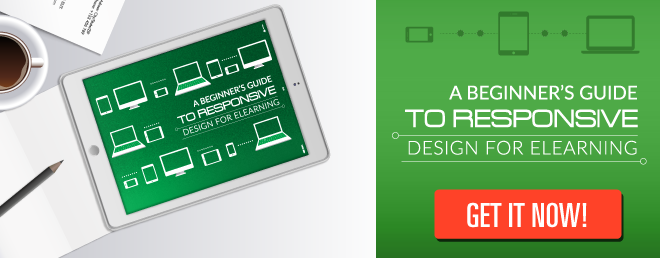A common misconception is that eLearning materials can be simply transferred into mLearning courses. However, during the transfer, it is necessary to rethink the entire instructional design: mobile learning requires minimalism, it focuses on granular design, and it must be instructionally solid to provide a satisfying user experience graphically, navigationally, and cognitively.
The following rules are intended to help instructional designers whether they are experienced in eLearning and are looking to create their first mLearning course or are entirely new to the eLearning/mLearning field.
Following these simple, but essential guides will enable course creators to facilitate learning and offer students an intuitive and enjoyable learning experience that meets their needs wherever they are.
Rule #1: Use the KISS Principle - Keep navigation simple.
The acronym KISS stands for “keep it simple, stupid” and basically implies that systems work best if they are kept simple, straightforward and easy-to-use.
Training content for mobile learning must feature an interface that is simple to navigate and can be operated entirely with a single thumb, or two thumbs at the most. Instructional designers should keep in mind the smaller screen size, which makes navigation more difficult than on laptops and desktop computers, and create a layout that features proportionate selectable areas including sizable buttons to help the user click on the intended button. For example include the word “Menu” in big letters on a button to make it clear how to go back to the menu. Don't forget that mobile learners are navigating with the precision of a finger, rather than clicking with a mouse so using using clear, concise and consistent navigation cues across all screens is very important.
Also read: Road Map to Success: Mobile Learning Essentials
“Small screen sizes force you to prioritize what really matters to your customers and business. There simply isn’t room for anything else.” Luke Wroblewski
Rule #2: Focus on low information density
Information density for mobile learning is lower than typical eLearning, and content must be designed for a shorter attention span, memory limitations, and the short battery life of mobile devices.
Generally, developers should aim to create bite-size chunks of information that take no longer than five minutes to process. Each of these sections needs to be available as a stand-alone module to allow learners to view the course in a non-linear fashion and access important information when they need it.
So, when developing your mobile learning courses think small. Mobile learners are often looking for puntual and specific information, so it is important to eliminate anything that isn’t absolutely necessary.
Also read: Start Thinking of Micro Learning Moments Now
Rule #3: Design for visual clarity
“Let learners quickly find the small piece of text they really need. Consider using headlines, bullet points or checklists to make contextual information more precise. Convert paragraphs to easily skimmed lists.” Horton.
Mobile learning must be designed with learner mobility in mind to enable learners to access the material in any situation including when they are outdoors, using public transportation, experiencing variations in light and noise levels, or receiving frequent interruptions. To facilitate the learning process, the designer should use a combination of captions, icons, color, and symbols along with clear and simple language in large font and short paragraphs to make the content easier to absorb on a small screen.
Recommended reads:
Mobile Usage Habits of Today’s Corporate Learner
Embracing a Mobile Mindset for Learning and Development
Rule #4: Make content searchable
The best feature of having learning materials on a mobile device is easy access to information. Instructional designers can increase the likelihood of mobile modules being found as they are needed by using obvious titles that learners can scan combined with an easy-to-use table of contents, index, and menu. If possible, course creators should also make content searchable.
Rule #5: Minimize Scrolling
To avoid excessive scrolling, content should last for no more than three scroll lengths on an average-size mobile device. If necessary, break up content into different screens that only take up half of the screen, with a clear “next” button, so that learners don’t have to scroll much.
All secondary content, including optional navigational controls, links that are not relevant to the information being displayed, copyright notices and other legal information, should stay to the bottom of the screen to avoid both distracting learners and wasting space in the initial scrolling zone. Every screen should guide the learner to further content where he or she can catch up or explore topics in greater depth.
There are a number of additional considerations when creating content for mLearning that differ from eLearning in general. In order to be successful, instructional designers must think about when and where users will be using the learning materials, how easy it will be for users to learn the information, and how they can ensure that the experience will be an enjoyable one.


